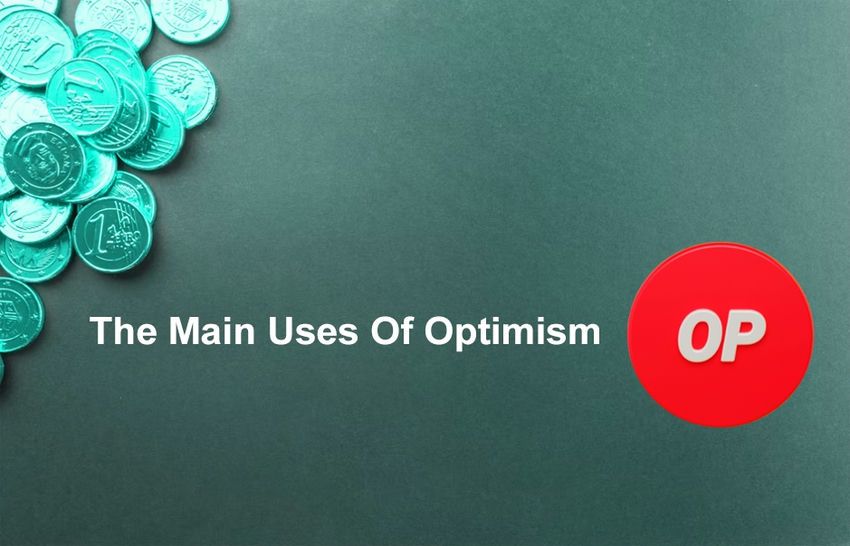Optimism is a Layer 2 (or “L2”) blockchain that inherits the security of Ethereum and helps the Ethereum base layer (or Layer 1) scale through faster and less expensive transactions. For projects that are EVM compliant, Optimism was made to be straightforward to launch.
Optimism is an “Optimistic Rollup,” which leverages the base layer Ethereum network’s security to speed up transaction processing. Imagine doing it like constructing a home in a secure, guarded neighborhood. You don’t need to put up security cameras or get guard dogs because the area is already very secure.
Layer 2 blockchains provide scaling solutions for Layer 1 (or “L1”) blockchains. Optimism is a scalability solution for Ethereum in this case. The primary or foundational blockchains are layer 1 blockchains. Transactions from Layer 1 chains can be processed on another blockchain, requiring the original chain to just keep a summary of the completed operations. This dramatically reduces the blockchain’s requirements, increasing scalability and lowering gas costs.
The Optimism Foundation is a non-profit organization dedicated to the management of Optimism. The Optimism Collective is the two-tier governing system of Optimism, consisting of the Token House and the Citizens’ House. Token House participants can be OP owners.
How Does Optimism Work?
Because Optimism is an EVM-equivalent blockchain, there is no need for translations between other EVM blockchains. Optimism states that everything that functions on Ethereum will also work on Optimism.
After submitting transaction data to Optimism, it gets “rolled up” to the Ethereum mainnet in phases. Optimism is a positive conglomeration – the “optimistic” term derives from how the blockchain validates transactions. Instead of building its consensus mechanism, Optimism relies on the consensus protocol of its L1. In this scenario, the Proof-of-Stake method of Ethereum. In other words, by leveraging Ethereum’s well-established security, Optimism can be faster and less expensive than the base chain.

In addition, the single computer’s sequencer aggregates these sets of operations. With a challenge mechanism, the transaction cost is dramatically reduced—typically between 1% and 10% of the cost on the Ethereum mainnet.
All Optimism transactions are subsequently published to Ethereum’s L1 blockchain, where they gain access to Ethereum’s robust security features. There is a time window after validators have posted their assertion to the L1 blockchain for anyone else to contest the transaction’s legitimacy. This is done on the base chain, not the L2.
Governance: Optimism’s The Model
The OP coin is the OP ecosystem’s native cryptocurrency.
The Optimism Collective is in charge of optimism. The official website lists the ensemble as follows:
“… a network of organizations, groups, and individuals working together to promote the common good and secure the future of Ethereum.”
The Optimism Collective will be governed by two distinct houses: the Token House and the Citizens’ House. Let us dissect it.
The Token House
The introduction of the OP token and the Token House signaled the start of Optimism’s governance. Through the initial airdrop, OP was given to hundreds of thousands of addresses, who engaged in community-oriented activity (more on that later).
Members of the Token House, in any case, are in charge of deliberating, proposing, and voting on numerous propositions. OP holders can vote directly or delegate their voting authority to a third party to do this.
Essentially, the Token House votes on the following categories of proposals:
- Protocol Upgrades
- Adjustment For Inflation
- Appropriations From The Treasury
- Rights Protection
- Grants From Governance Funds
The Citizens’ House
At its core, the Citizens’ House is an experiment in non-plutocratic governance. It is in charge of retroactive financing for public goods.
What Are The Main Uses Of Optimism?

Optimism is an Ethereum-scale platform that specializes in DApps and smart contract applications. As previously stated, it is an experiment in sustainable ecosystem finance in addition to its blockchain applications.
Optimism is part of an Ethereum scaling philosophy that expects developers would build atop Layer 2s, with the base chain providing security.
Optimism DApps
Decentralized applications (or DApps) are blockchain-integrated websites that require you to log in to your wallet and sign all transactions.
Optimism DeFi
Decentralized Finance, or “DeFi,” is a word used to define all financial services that employ blockchain technology. Earning interest, borrowing, lending, and trading are all standard services. DeFi enables transactions that are trustless, permissionless, and quick.
Optimism NFTs
Non-Fungible Tokens (NFTs) are exclusive digital assets whose ownership is controlled by a blockchain. Digital artwork, collectibles, virtual reality goods, cryptocurrency domain names, ownership records for tangible things, and other items are examples of NFTs.
What are Optimism NFTs?
NFTs minted on the Optimism blockchain are known as Optimism NFTs. A popular blockchain for NFT applications is Optimism because of its quick speed and interoperability with Ethereum.
Conclusion
Optimism is a Layer 2 scaling solution for the Ethereum blockchain that promises to enhance transaction throughput and cost efficiency while addressing network scalability difficulties. Optimism allows for off-chain processing of transactions by employing optimistic rollups, significantly reducing the congestion on the Ethereum mainnet and lowering transaction fees. It achieves this by bundling multiple transactions into a single rollup, verified on-chain, offering increased throughput and faster confirmation times.
Optimism plays a crucial role in enhancing the usability of decentralized applications (DApps) on Ethereum, making them more accessible and user-friendly. It functions as a Layer 2 solution on top of the Ethereum mainnet, benefiting from the underlying blockchain’s security and decentralization.
FAQs
Q. How does Optimism differ from Ethereum 2.0?
A. Optimism and Ethereum 2.0 aim to improve Ethereum’s scalability, but they use different approaches. Optimism is a Layer 2 solution that builds on the existing Ethereum blockchain, primarily targeting smart contract scaling. Ethereum 2.0, on the other hand, is a complete upgrade of the blockchain’s consensus mechanism, transitioning from Proof of Work to Proof of Stake and introducing shard chains for improved scalability.
Q. What are the advantages of using Optimism?
A. Optimism offers several advantages, including faster and cheaper transactions, reduced Ethereum mainnet congestion, improved decentralized application scalability, and a better user experience due to lower gas fees.
Q. Is Optimism fully decentralized?
A. Optimism operates as a Layer 2 solution on the Ethereum mainnet, benefiting from the underlying blockchain’s decentralization and security. However, the degree of decentralization in the execution of Layer 2 transactions can vary based on the specific implementation and architecture of applications built on Optimism.
Q. Can I use Optimism for any Ethereum-based token or contract?
A. Optimism supports a wide range of Ethereum-based tokens and smart contracts. However, not all tokens and contracts may be immediately available on the Optimism network, as developers and projects need to deploy their applications to the Layer 2 solution.
Q. Is using Optimism more secure than the Ethereum mainnet?
A. Optimism inherits the security of the Ethereum mainnet since the Layer 2 transactions are ultimately verified on-chain. However, the security of the Layer 2 solution may depend on the specific implementation and practices followed by the developers.











